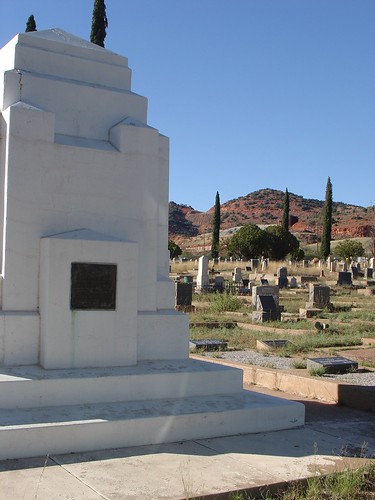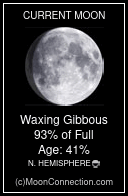Skeleton Canyon
is located in the far southeast corner of Arizona with side canyons leading into New Mexico. It is located just a handful of miles from the Mexican border. In the 1800's, it was used by Mexican smugglers and bandits to smuggle goods and riches into the U.S. for sale on the black market. It was well known by American bandits as well.
In July of 1881, in a small Mexican town, some Mexican bandits, known as the Estrada Gang, were resting after looting the town of Monterrey. An American bandit named Jim Hughes overheard them discussing their plan to smuggle their treasure into the U.S. through the long narrow canyon, later to be named Skeleton Canyon. Jim Hughes spent much of his time in some of the wild and lawless towns of the area frequented by many outlaws, such as Charleston (Arizona), Galeyville (Arizona) and Shakespeare (New Mexico).
Hughes went back to Arizona to tell his gang about the potential big score. If they could ambush these Mexican bandits, they could steal all of their riches. He first talked to William "Curly Bill" Brocius. Then he rode into Tombstone to meet up with Billy Clanton, whom he had met the previous year. Billy Clanton was a member of the famous Clanton gang, involved in the shootout at the O.K. Coral in Tombstone three months later on October 26, 1881. Newton Hayes Clanton, also known as "Old Man" Clanton, was impressed with the potential riches they could score.
The gang was planning their ambush when some of their spies told them the gang was planning to smuggle their goods through the canyon sooner than expected. Curly Bill was out of town, so Jim Hughes decided to take over the plans. He recruited a couple of friends to help in the plot. Their names were Zwing Hunt and Billy Grounds, real name William Boucher.
The Estrada Gang was spotted about a mile or two into Arizona close to an area known as Devil's Kitchen. The Mexican Gang stopped here to rest themselves, their mules, have a meal and a afternoon siesta. The American gang was in awe of the thirty heavily packed mules with the Estrada Gang. The American Gang waited for them to all fall asleep, then gunfire interrupted the silence. The narrow canyon didn't give the Mexican bandits a chance. The ambush scared the mules and they started to scatter. The mules had to be shot to keep the loot from getting away.
When the smoke cleared, nineteen Mexican bandits and 26 mules lay dead. It was among the worst massacres in Arizona history. Legend has it that the gang gathered up over $75,000 in coins, jewels and artifacts, but with no mules, they had no way to pack it out of the canyon. Also, their horses couldn't carry such a heavy load. So they divided up a small amount that they could easily carry and buried the rest nearby. They returned to their hangouts in their outlaw towns to spend the loot that they had brought back.
While the others were out enjoying a little bit of their new wealth, Jim Hughes had other ideas. He met with Richard Zwing Hunt and Billy Grounds and hatched a plan to double-cross the others. Hughes was to stay in Galeyville, as to not rouse any suspicions. The other two would ride back to Skeleton Canyon and dig up the treasure and bury it in another spot. Then only the three of them would know where it was buried. Zwing and Billy finally found a Mexican teamster who was willing to take his wagon and horses into the canyon. They then dug up the treasure at the end of the canyon and reburied it further in the canyon or somewhere close by. Then the Mexican and his horses were killed and buried at the site. They then burned the wagon over the mound concealing their treasure. Now, only Zwing and Billy knew where the loot was buried.
Fearing retaliation from their ex-partners, Zwing and Billy went into hiding. They found a desert cave to hide out in for almost four months. At this time, Billy wrote some letters to his sister Maggie Clinger in San Antonio, Texas. He told her where the treasure was buried in case they would not make out alive. Once a week, he came out of the canyon and flagged down a stagecoach driver and gave his letters to him.
They finally came out of hiding on March 19, 1882 (some of the old gang had recently been killed in the shootout at the O.K. Corral in Tombstone). They rode into Charleston (near Tombstone) and on March 25, tried to rob the Tombstone Mining and Milling Company. One man was killed, but the robbery didn't go as planned. They fled the area, but not before being positively identified. A sheriff's posse was out hunting down Zwing and Billy, who were hiding out at Jack Chandler's ranch near Tombstone.
When the posse arrived at Jack Chandler's ranch, a shootout ensued. Billy Grounds was killed and Zwing Hunt was wounded pretty bad. Zwing was taken to the hospital in Tombstone. When Jim Hughes heard the news, he rushed to the hospital to find out where the treasure was. When he had arrived, he discovered that Zwing was doing better than expected and had persuaded his doctor to let him take a buggy ride with a friend, which was presumed to be his brother Hugh Hunt in disguise. Zwing was never seen again.
Later in Tombstone, Hugh claimed his brother was shot by Indians and killed after his escape from the hospital. Supposedly, a group of army scouts buried him in what is now called Hunt's Canyon. The other story that had been heard was that Hugh and Zwing made their way back to their home in San Antonio, where Zwing later died of his wounds. It is said that he gave his uncle a map to the treasure site before he died. On this map, it is said that the treasure is at the base of Davis Mountain. But the problem is that Zwing and Billy named Davis Mountain themselves after their friend Jim Davis, who they buried here. It could be any number of peaks in the Peloncillo Mountains. More clues provided by Zwing Hunt to his uncle were also of no help. Zwing said that very close to the mountain, was a curving canyon with its east wall completely rocky and bare and the west wall covered in trees. Through this canyon was supposed to be a small stream. The stream had a ten foot drop where water cascaded down near two springs. Twenty steps east of the treasure site was a square shaped rock about three feet high. Over the burial spot there would be a burnt wagon.
The Hunt family searched for years and never found the treasure. They could never even find the two springs. It is believed that the earthquake that shook the area in 1886 caused the springs and stream to dry up for good. They may have only flowed after periodic heavy rainfall anyhow. Remains of a burnt wagon were found in the canyon once, but no treasure was ever found under it.
One of the letters that Billy wrote to his sister claimed, "the is a cave at the mouth of the canyon...from our lookout you can see the turf growing back over where we buried the treasure." Numerous caves have been found that could be the one Billy talked about. Even one cave had been found with remnants of old ropes in it, but no treasure ever found in the area.
Through the years, many old Mexican coins have been found in the canyon. And numerous human skulls and bones and bones of mules have been found in the canyon. In 1891, a cowboy and a government official found a leather pouch with several thousands of dollars worth of Mexican coins in it. It is believed that the treasure included a cigar box full of jewels, two figures of pure gold, $90,000 in Mexican silver dollars, 39 gold bars, and numerous bags of gold coins. Enough evidence has surfaced to suggest that the treasure really does exist.
Related:
https://www.google.com/search?q=Jim+Hughes+Treasure+Map












